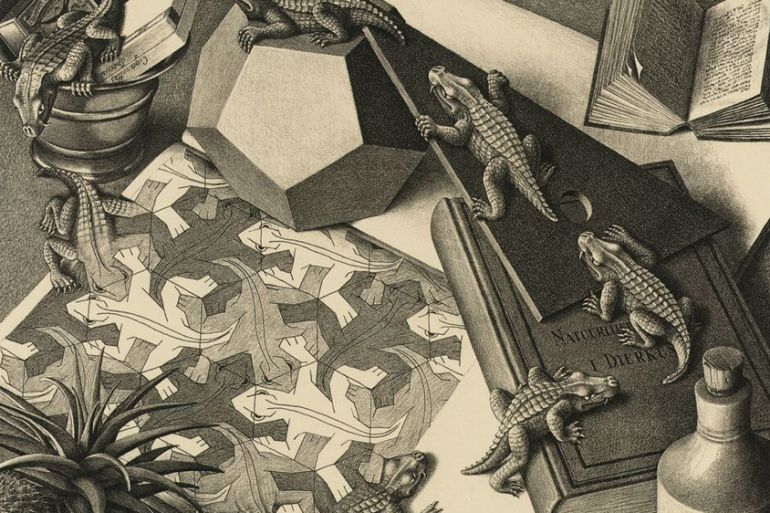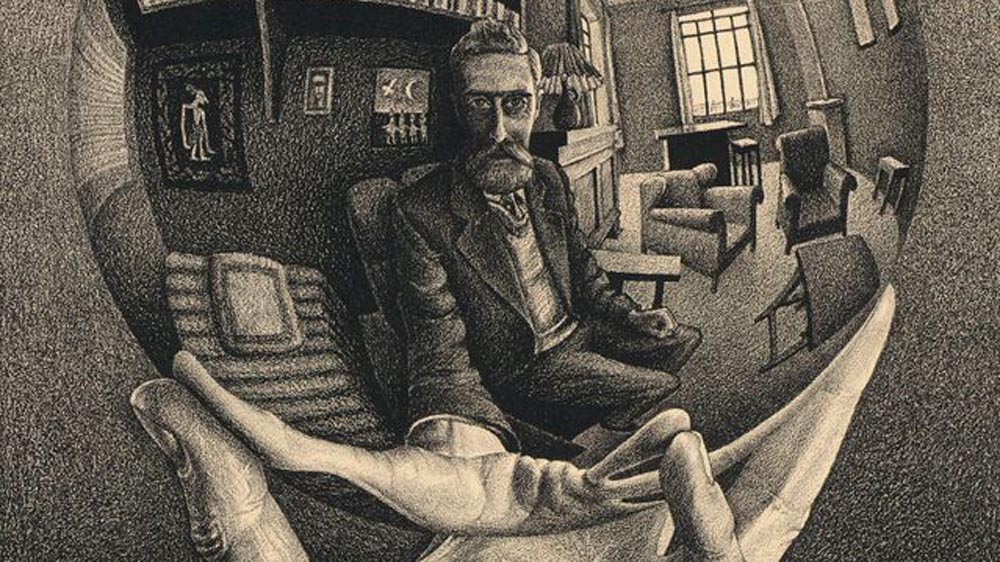Escher’s graphic artwork to be displayed in UK
Exhibition devoted to the highly successful Dutch graphic artist to open for first time in London.

London, UK – You’ll recognise the pictures, but you’re less likely to recognise the name.
MC Escher is one of the most successful graphic artists. His carefully detailed images are on T-shirts, coffee mugs and many university dorm room walls.
Keep reading
list of 4 items‘Refuge of the last dreamers’: Luang Prabang, a city suspended in time
Canadian Nobel-winning author Alice Munro dies aged 92
King Charles unveils royal portrait
“Nearly everyone has an image from the time they are eight to 18, and they probably put it up in their room,” said Micky Piller, former curator at the Escher Museum in The Hague.
Piller was in London, specifically south London at the Dulwich Picture Gallery, for the opening of an exhibition devoted to Escher.
Museums have been slow to adopt Escher as an artist worthy of their walls; this show is the first devoted to his work in England.
Piller chalks that up to snobbery.

Maurits Cornelis Escher was born in the Netherlands in 1898.
He started out studying architecture, but in a matter of weeks, a teacher noticed his gift for drawing, and he switched to graphic art.
Escher lived for some time in Italy and Switzerland but returned to the Netherlands in 1941 and remained there until he died in 1972.
He made two visits to Spain, to the Alhambra, the 13th-century Moorish palace where he was intrigued by the geometric Islamic tiles.
The tiles became an early influence on his tessellations – a pattern of interlocking objects that endlessly repeat.
Serious mathematicians loved Escher’s work for its precision; hippies in the 1960s loved his work for its mind-bending aspect.
”A weird combination,” said Patrick Elliott, senior curator at the Scottish National Museum of Modern Art, where the Escher exhibition was showing earlier this year.
Escher worked on his own in a studio at home, immune to the lure of high-profile projects.

More interested in solving his art’s complex puzzles than celebrity, Escher turned down opportunities to design a Rolling Stones album cover and work with Stanley Kubrick on a film.
“Escher’s work anticipated mainstream pop culture and psychedelic art,” said Elliott on a tour of the Dulwich show.
As that movement ebbed, Escher was forgotten. By the 1980s, he “was regarded as a graphic artist, a thing of the past”, Elliott said.
But now, the artist’s popularity is on the rise; his works have inspired contemporary video games and the numbers are up at the Escher Museum in The Hague.
“When we started out, we had 60,000 visitors a year. Now that figure is 150,000,” Piller said.
Even more amazing: A 2011 Escher show in Brazil attracted more than half-a-million visitors.
The artwork
Relativity is a series of staircases that defy gravity.
They go up and down with steps that can be used on the topside or underside. The staircases lead to scenes that go sideways.
The picture inspired the creators of the video game Echochrome.
Belvedere came to Escher from a photograph his son had taken of a medieval building in Sicily.
Although Escher switched from studying architecture to graphic art, many of his works are of buildings – but buildings with a twist. Piller says Escher’s work is often “sneaky”.

Hand with Reflecting Sphere is an early selfie. Escher made the lithograph in 1935.
Eighty years on, visitors are encouraged to take their own selfies with a mirrored globe hanging at the end of the show.
Escher said about this work: “His head, or to be more precise – the point between his eyes, comes into the absolute centre. Whichever way he turns he remains at the centre. The ego is the unshakable core of his world.”
Drawing Hands is one of Escher’s most celebrated and paradoxical works.
The right hand and the left hand are simultaneously drawing each other – the drawing is drawing itself.